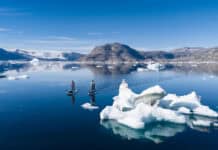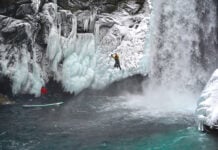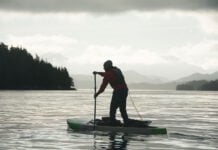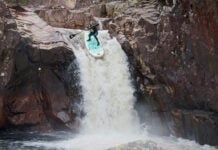We awake early in the tent, mentally prepared for the daunting crossing of the Sermilik Fjord. My partner, Julie, and I dismantle the polar bear perimeter guard, grab the rifle and walk out to our launch point to reassess the crossing.
Chris Christie dodges icebergs in East Greenland
The marine fog is burning off, revealing a fresh coating of sea ice. A village-sized iceberg has drifted onto a reef, blocking our intended route to the planned rendezvous point later in the day. We’ve come to expect the unexpected on this multiday trip along the rugged, remote Ammassalik coast in eastern Greenland. We pivot our agenda to respect the environment and tip the scales in favor of a safe passage.
Purposeful thought-out movement is our safety net. This region offers some of the most dramatic landscapes in the Arctic. We travel each day with hours in mind as our guide, not kilometers paddled. Distance means nothing while being in the moment connects us to this wild place.
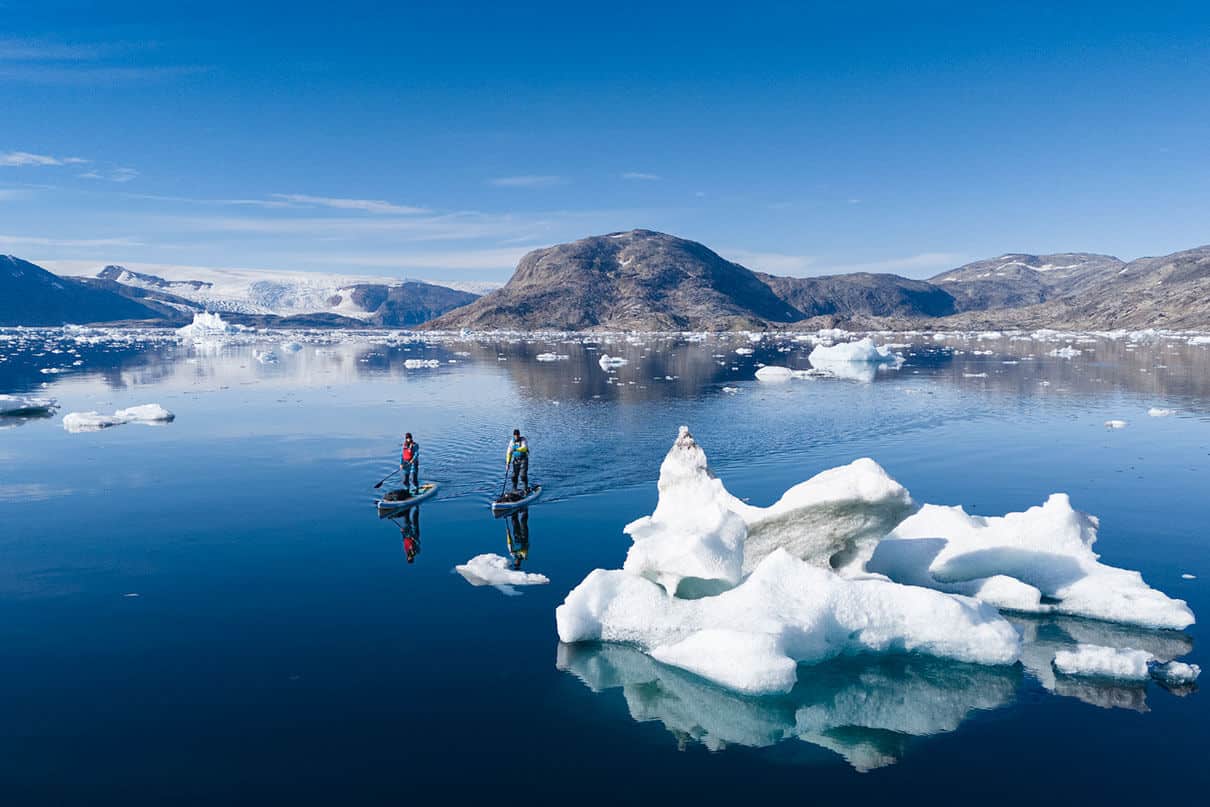
We recalculate our time to paddle the exposed crossing in time for the pickup, which will bring us back to the village of Kulusuk, 100 kilometers away. Departure is a compromise between waiting for midday warming to melt the thin ice on the water and moving into action before tides and wind erase our chosen route.
“We need to push off by noon,” Julie says. I bet it’s 15 kilometers across, factoring in weaving through the icebergs. There is no room for error if conditions deteriorate and slow our progress. This is the first time we have felt pressure to move quickly during this self-supported trip.
“That iceberg must be 30 meters high and two kilometers long,” Julie says when we’re finally standing on the shoreline with our boards loaded. “We need to stay at least half a kilometer away in case it calves.”
What sounds like artillery fire echoes in the distance, and a large section of ice breaks off, reinforcing our safety margins. The last thing we need is to be hit by a block of ice or a rogue wave created by a rolling iceberg.
Our observations from sea level show no route through the ice—it appears impassable—so pushing off has a daunting, foreboding feeling. But photos taken from a high point map a route through the maze. The paddleboards give us a height advantage for route-finding; we can see the route more easily than sitting low in the water.
Our observations from sea level show no route through the ice—it appears impassable—so pushing off has a daunting, foreboding feeling.
Julie points to a section ahead where we would be sandwiched between towering icebergs, and this solidifies the need to move fast. She pushes off with few words, and the hull of her paddleboard carves a narrow path through the water. We alternate leads, stagnated by friction, while the sounds of breaking ice add to the anxiety of uncertainty as we strain for momentum to reach the open ocean.
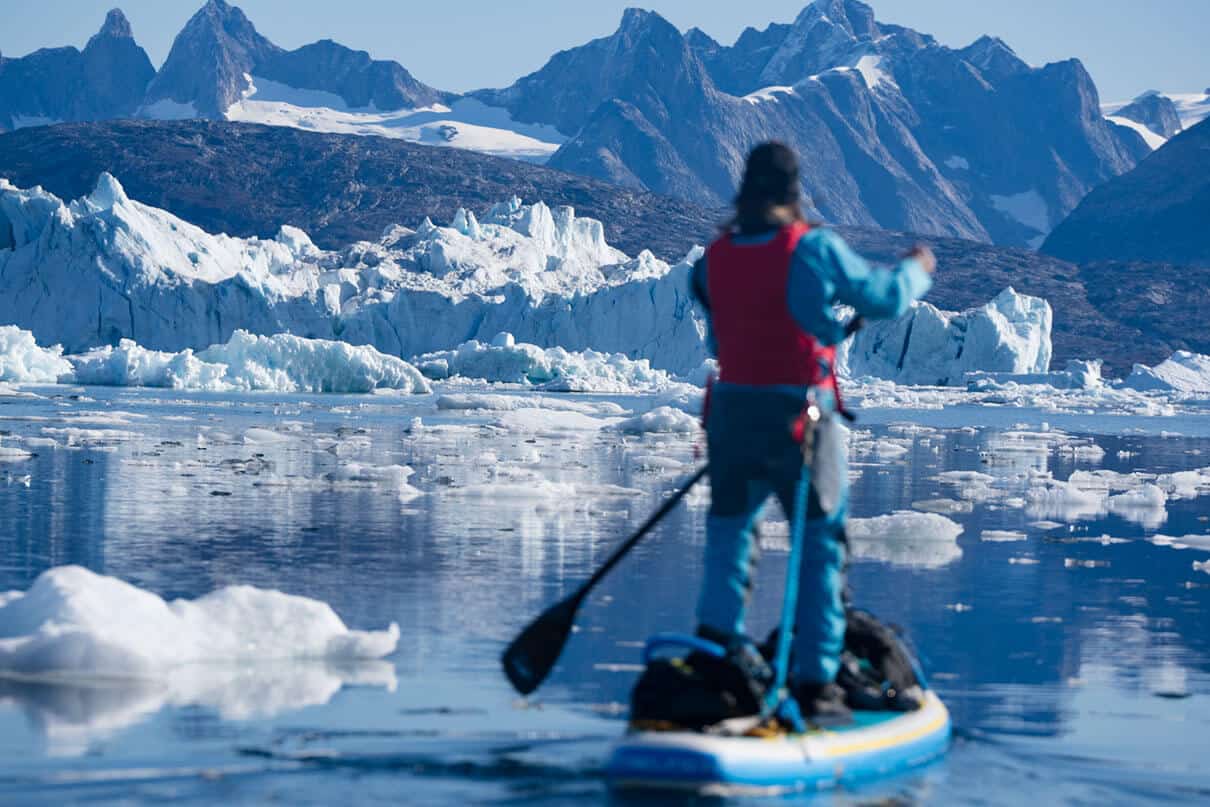
Our eyes focus on the most direct line across the fjord while we are conscious of the towering sculptures of ice that could shift at any moment.
Soon, the worst is behind us, and our accomplishment overrides earlier doubt. The crossing is said to be a rite of passage for human-powered craft, and we are now ahead of schedule. Julie and I look at each other. We’ll carry this crossing with us long after we’ve returned home.
Chris Christie is a retired first responder who photographs and writes about his adventures from his home base in Squamish, British Columbia. Pirhuk of Greenland Mountain Guides inspired this journey and mentored Chris’ knowledge of the Arctic.
The Sermilik Fjord’s Greenlandic name means “place with glaciers.” | Feature photo: Chris Christie


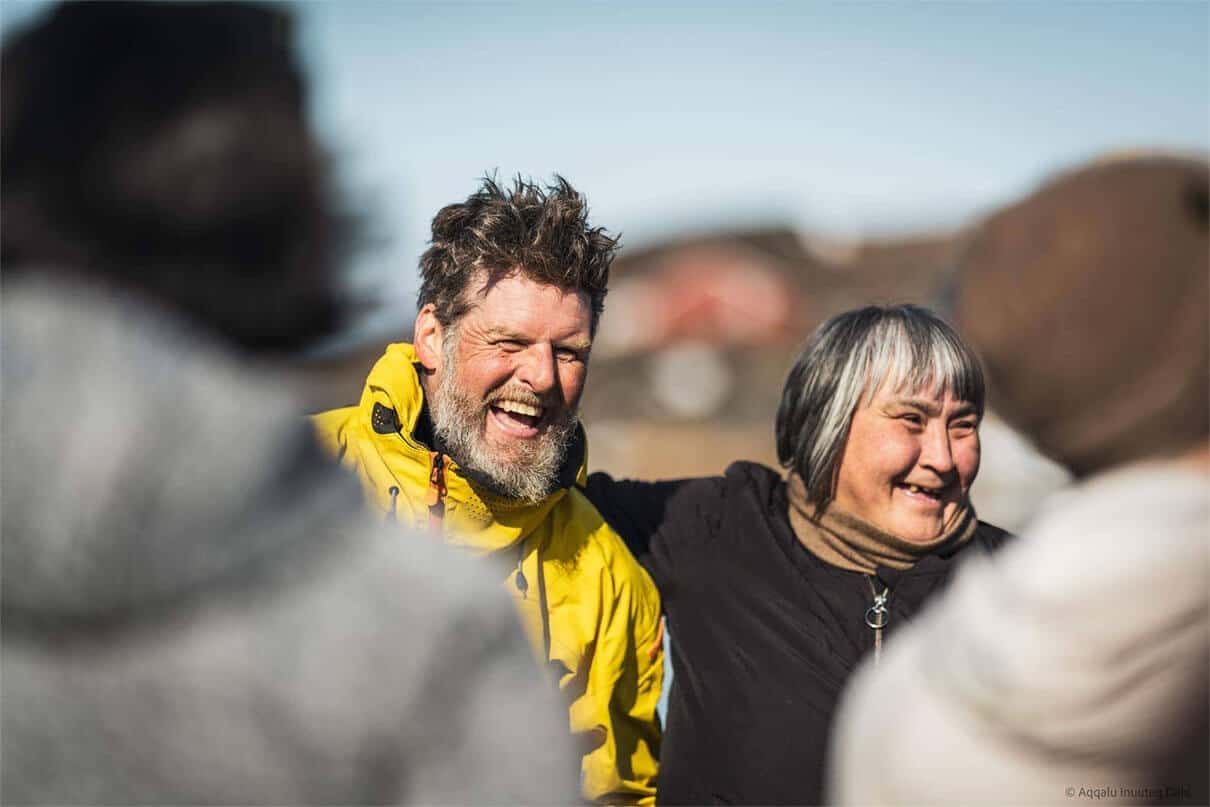
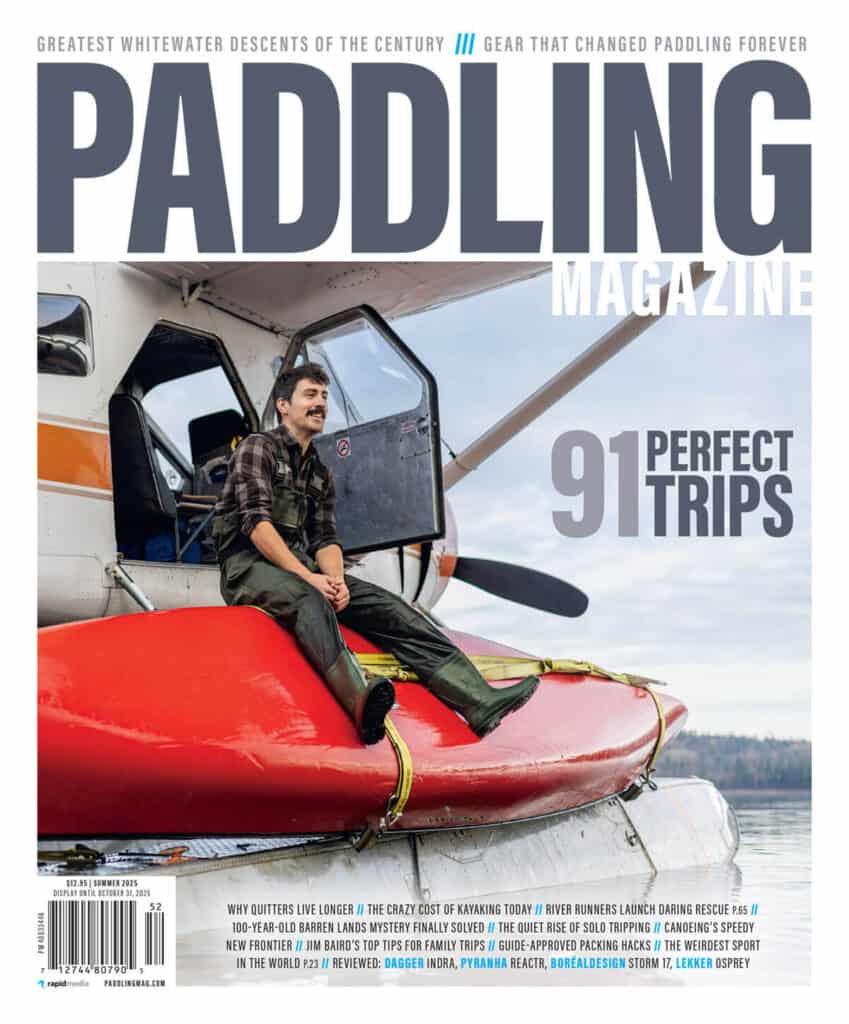 This article was published in Issue 74 of Paddling Magazine.
This article was published in Issue 74 of Paddling Magazine. 